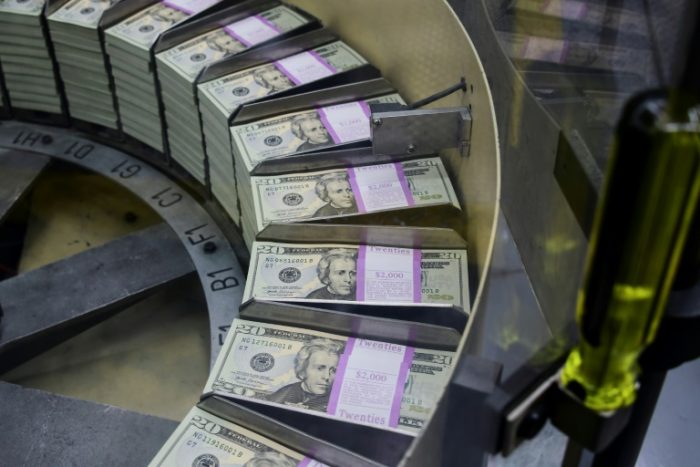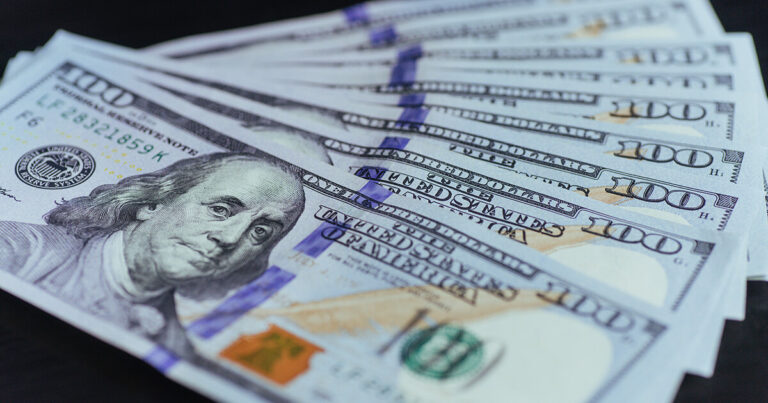
This week, the Forex market found some positivity as reports indicated that Omicron is less severe than previously believed. Later in the week, Fed monetary policies and consumer prices boosted currency news trading, relegating haven currencies to the bottom.
Risk assets profited from the positive sentiments recouping previous losses, with the Australian dollar taking the top spot. Japanese yen emerged as the week’s worst performer.
Currency Trading Fundamentals

Omicron Latest News
Positive developments on the Omicron variant uplifted currency news trading in the week.
Earlier in the week, studies revealed that the Omicron variant is less dangerous despite being highly transmissible. Drug manufacturers announced that three jabs of the vaccines work effectively against the omicron virus.
Traders took advantage of the positive developments to invest in risky assets with higher returns. Pfizer and BioNTech lab tests showed three doses neutralize Omicron variants.
Meanwhile…
Several nations implemented new restrictive measures to curb the highly virulent Omicron strain. In particular, the UK introduced plan-B targeting to slow infection rates.
Boris Johnson requested citizens to wear masks, take jabs, acquire health passes and work from home whenever possible.
Inflationary Pressure
Globally inflations continue to spike, slowing down the world economy. The US CPI rose to 6.8% in the week, hotter than expected, sending higher stocks, bonds, and risk assets.
Despite increased inflation, none of the G7 countries have begun tapering measures due to the ongoing pandemic.
Economic Data and Central Banks Monetary Policies
The g7 nations released positive financial data that contributed significantly to the exceptional performance of the commodity-linked assets. The countries recorded improved economic and employment records.
Observers predict central banks of the G7 nations would remain dovish, citing current coronavirus uncertainty.
US Oil Price Prediction

US oil price prediction reflects the return of risk-on mode. Oil prices closed the week above $71 per barrel. Since August, US crude oil gained the most thanks to increased fuel demand and easing Omicron concerns.
G7 Fundamental Analysis and Economic Review
Table: g7 nations performance summary
| Currency pair | 4th December 2021 | 10th December 2021 | Average price | Percentage change | Remarks |
| USD | 96.330 | 96.100 | 96.187 | 0.015 | drop |
| GBPUSD | 1.3264 | 1.3269 | 1.3241 | 0.2872 | increase |
| EURUSD | 1.1285 | 1.1311 | 1.1302 | 0.0354 | increase |
| USDCHF | 0.9256 | 0.9209 | 0.9230 | 0.3378 | drop |
| USDJPY | 113.46 | 113.38 | 113.50 | 0.51 | drop |
| USDCAD | 1.2754 | 1.2720 | 1.2695 | 0.9500 | drop |
| AUDUSD | 0.7049 | 0.7171 | 0.7132 | 2.4282 | increase |
| NZDUSD | 0.6750 | 0.6797 | 0.6787 | 0.8607 | increase |
US Dollar Index News

Finally, greenback’s six successive weekly rallies ended after Friday’s pullback. US dollar index news closed the week at 0.015 percent lower to 96.097, due to a 0.18 percentage loss on Friday.
Previously the dollar had risen by 0.06 percent. Economic data and FED’s monetary policy uplifted the dollar in the larger part of the week.
Weekly jobless claims and job openings supported the dollar early in the week. While jobless claims tumbled to 184 thousand from 227 thousand, job openings surged by 431 thousand.
But on Friday, inflation pulled down the dollar. The monthly consumer price index rose 0.5 percent, and the annual inflation rate jumped to 4.9 percent from 4.6 percent.
Pound to US Dollar News
According to investing.com, the cable closed the week up by 0.28 percent to 1.3273. Previously it had declined by 0.76 percent. The Uk had a relatively quiet week, with the forex market waiting Friday for high-impact currency news.
At the start of the week, industrial production declined by 0.6 percent, following a 0.4 percent drop. However, following an uptick of 0.1% in October, manufacturing production remained stable for November.
Midweek, UK’s monthly GDP data also bolstered pound to US dollar news. While dispelling expectations of a rate hike soon, UK economic growth contracted by 0.1 percent in October after a 0.6 percent boost in September.
The construction index and retail sales data also failed to move the dial in the currency news trading.
Euro US Dollar News
After slipping by 0.02 percent the week prior, the euro dropped by the same percentage this week to 1.1331. Germany’s economy primarily drove currency news trading for the euro.
Germany’s industrial production supported the euro. In the euro US dollar news, industrial production surged 2.8 percent to reverse a previous drop of 0.5 percent.
However, factory orders dampened the euro currency. German factory orders declined 6.9 percent after rising by 1.8 percent in the previous month.
Midweek, German trade data and economic sentiments intensified the euro’s woes. While Germany’s trade surplus narrowed to €12.5 billion from €12.9 billion, the economic sentiment index drooped to 29.9 from 31.7.
In contrast, Eurozone’s economic sentiment index climbed to 26.8 from 25.9. Yet, eurozone GDP, German inflation data, and French nonfarm payrolls had little effect on the eur/usd exchange rate.
Fx CHF
The Swiss franc tumbled by 0.3378 percent to close at 0.9230 against the US dollar. Prior, the Swiss franc had gained 0.66 percent. Eased coronavirus concerns and economic data worked against fx chf.
In November, the Swiss unemployment rate remained unchanged at 2.5%. Switzerland’s Economic Forecast: Growth forecast lowered to three percent for 2022 and two percent for 2023.
USD CAD Fx
The Canadian dollar appreciated by 0.94 percent in the week to 1.2722. Previously, the Loonie depreciated by 0.41 percent. Economic data and Omicron uncertainty drove usd cad fx currency news trading.
A positive slant was seen in Ivey PMI and trade numbers this week. The trade surplus increased to C$2.10billion from C$1.40billion, and the Ivey PMI soared to 61.2 from 59.
While economic data shaped usd cad trading, Canada’s Central Bank monetary policy decision and forward guidance dominated forex currency news.
Amid the Omicron threats, the central bank of Canada maintained lending rates at 0.25 percent. The bank also indicated employment has returned to the pre-pandemic levels.
Asia Pacific Currency Trading

The kiwi and the Aussie dollars performed exceptionally after six weeks of losses this week. And as expected Japanese yen, a haven currency in the region, underperformed.
AUD Currency Strength
The Aussie dollar closed the week stronger by 2.44 percent to 0.7172 against the greenback.
This week, a spate of economic data, crude oil, and omicron uncertainty bolstered aud currency strength. The service index rose to 49.6 from 47.6, and job advertisements grew 7.4 percent.
The housing sector also improved but had little impact on currency news trading in Australia.
In fact, the Australian currency received much of its support from monetary policy decisions and rate statements made by the central bank. While keeping interest rates unchanged, RBA outlined Omicron threats can not derail economic recovery plans.
New Zealand Dollar to US News
Despite the Omicron variant spreading rapidly globally, the nzd rallied in the week. It gained strength on dovish monetary policy and positive economic updates.
The kiwi dollar rallied 0.35 percent to end the week at 0.6796 against the greenback. Early in the week, retail sales and business leveraged the kiwi dollar.
Once again, consumer spending rose. According to New Zealand dollar to US news, November’s electronic card retail sales surged 9.6 percent after a ten percent spike in October.
While consumer spending supported the kiwi dollar, business PMI disappointed, sinking to 50.5 from 54.3.
US Dollar to Japanese Yen Forecast
The Japanese yen closed the week weaker by 0.57 percent to 113.440 against the greenback. Previously, the haven yen rallied by 0.51 percent.
Earlier this week, data on household spending boosted the Japanese yen. After a five percent increase in the previous month, spending increased by 3.4 percent in October.
The manufacturing sector also supported the Japanese yen, with the BSL index rising from 7.0 to 7.9.
Unfortunately, GDP data disappointed US Dollar to the Japanese Yen Forecast. Yearly, Japan’s economy contracted by 3.6 percent, with quarterly numbers losing 0.9 percent.
Week Ahead

With the threat of the Omicron variant now taking backstage, we expect decisions of central banks to drive the forex market. Next week, central banks will meet to deliberate on interest amidst the escalating interest rates.
Economic data, though few, would also contribute to the market activity. The G7 nations would be releasing their financial reports, influencing central banks’ decisions.
For the week, the US dollar lost against all the g7 currencies primarily due to market sentiments turning positive. Additionally, dollars currency news trading took a hit on Friday as US inflation surged 6.8 percent.
With the easing Omicron variant uncertainty, traders confidently ran to the haven currencies. As a result, commodity-linked assets rebounded, with the Australian dollar gaining over 2 percent.




